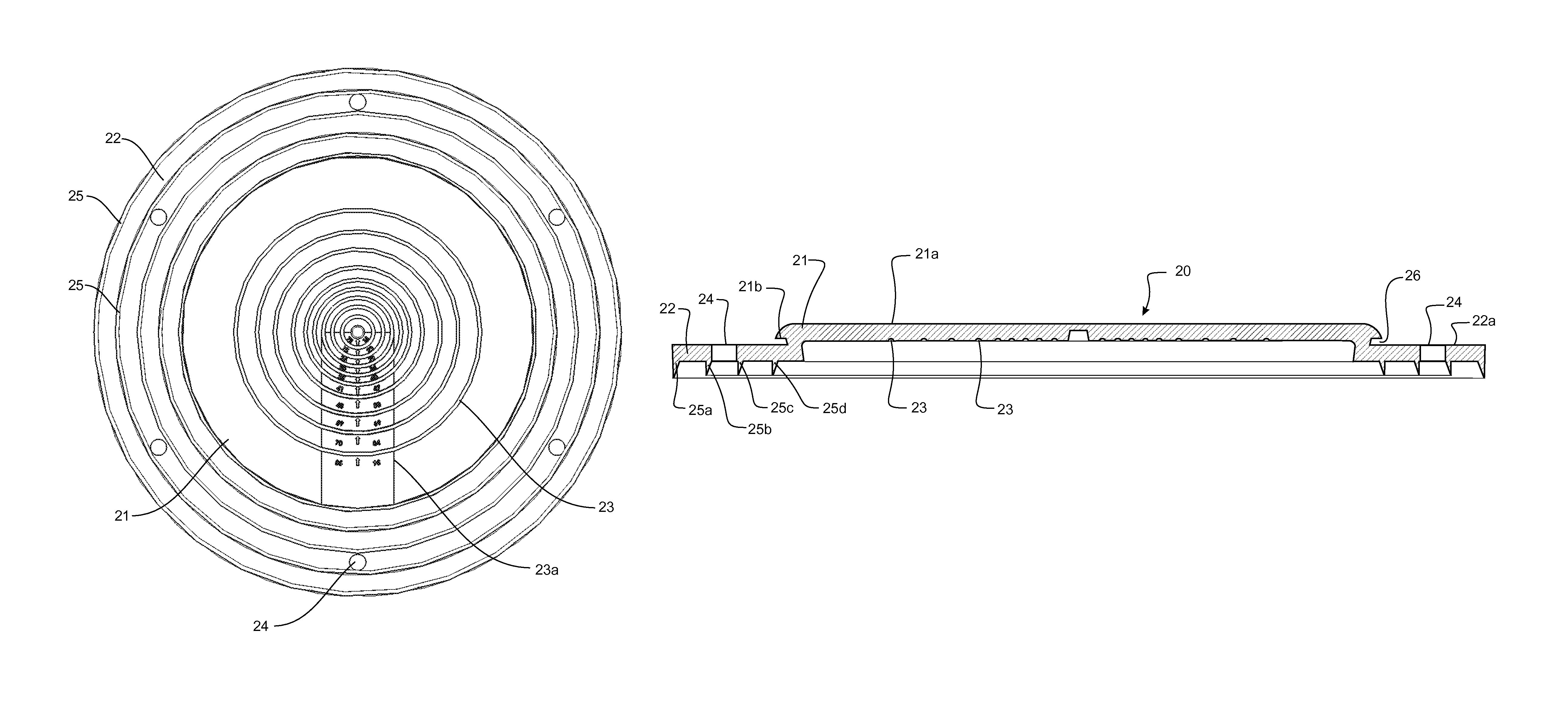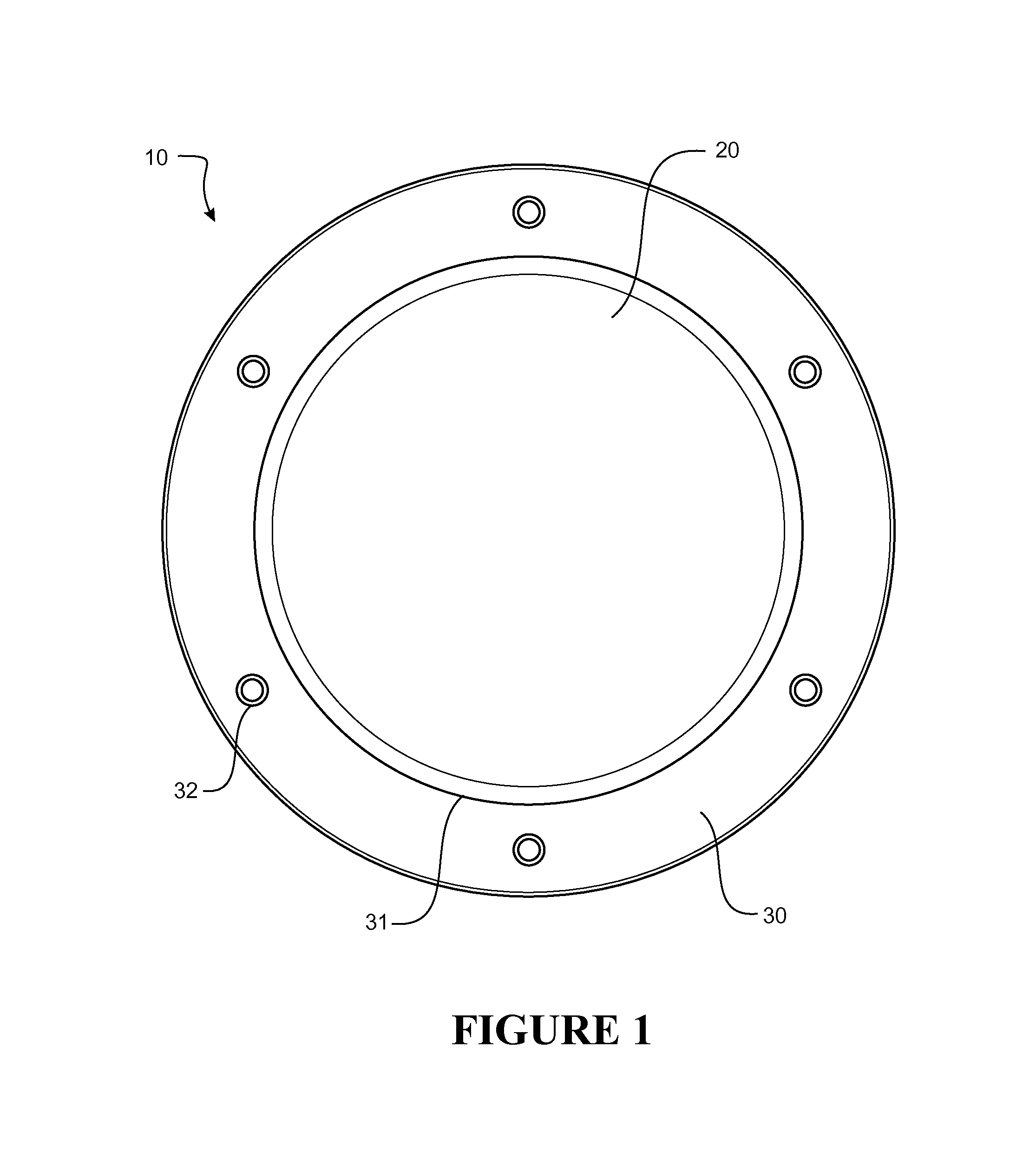Sealing gland
a technology of sealing glands and glands, which is applied in the direction of pipes, mechanical equipment, pipes/joints/fittings, etc., can solve the problems of not being able to easily remove and replace sealants, pipe, wall panels or similar cannot be easily removed and replaced, and not having an easy-to-remove system
- Summary
- Abstract
- Description
- Claims
- Application Information
AI Technical Summary
Benefits of technology
Problems solved by technology
Method used
Image
Examples
Embodiment Construction
[0088]A preferred embodiment of the present invention will now be described with reference to FIG. 1 through 5.
[0089]Referring to FIG. 1, a preferred form sealing gland (10) is shown consisting of a sealing body (20) and a compression ring (30). In use, the sealing gland (10) seals between the outer wall of an elongate member (not shown), such as a pipe or other duct, and a surface through which the elongate member extends. Prior to use, an aperture is formed through the sealing body (20) for receiving and engaging about the elongate member. The sealing body (20) forms the seal between the elongate member and the surface, whilst the compression ring (30) maintains an effective seal by compressing the sealing body (20) as it couples the surface over the body (20). The preferred form sealing gland (10) is formed to seal between an annular member and a flat surface, such as a pipe or duct extending through a ceiling or roof surface. It will be appreciated however that the gland (10) ma...
PUM
 Login to View More
Login to View More Abstract
Description
Claims
Application Information
 Login to View More
Login to View More - R&D
- Intellectual Property
- Life Sciences
- Materials
- Tech Scout
- Unparalleled Data Quality
- Higher Quality Content
- 60% Fewer Hallucinations
Browse by: Latest US Patents, China's latest patents, Technical Efficacy Thesaurus, Application Domain, Technology Topic, Popular Technical Reports.
© 2025 PatSnap. All rights reserved.Legal|Privacy policy|Modern Slavery Act Transparency Statement|Sitemap|About US| Contact US: help@patsnap.com



